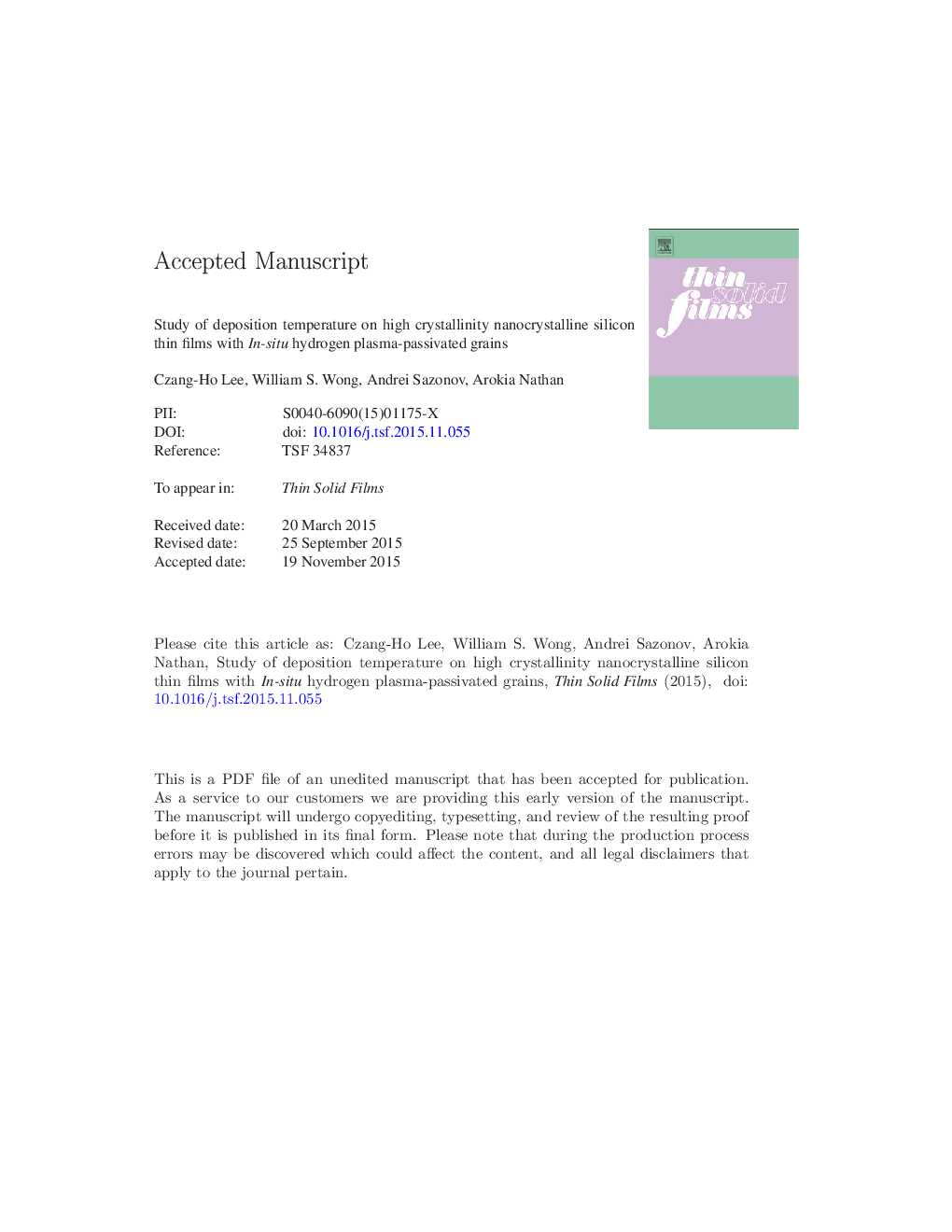| Article ID | Journal | Published Year | Pages | File Type |
|---|---|---|---|---|
| 1664223 | Thin Solid Films | 2015 | 30 Pages |
Abstract
This paper studies the effect of deposition temperature on the growth of nanocrystalline silicon (nc-Si) films deposited by 13.56 MHz plasma enhanced chemical vapor deposition (PECVD) with in-situ hydrogen (H) passivation. A high crystalline volume fraction (XC) of 80% was found in the ~ 100 nm nc-Si film deposited at 260 °C with 99% H2 diluted SiH4 at intermediate RF power between the power-limited and precursor-limited regimes. Based on these optimized deposition conditions, 300-400 nm nc-Si films deposited at 75-260 °C also showed a high XC of 82-85%, an intrinsic-like dark-conductivity (Ïdark) of ~ 10â 6 S/cm, and even a low mean oxygen content (CO) of 1017-1018 at./cm3. Although material properties were similar, deposition temperature appeared to change the qualitative structure of the nanocrystalline grains. The preferred grain orientation changed from ã111ã to ã220ã as the deposition temperature was increased from 75 to 260 °C due to enhanced surface diffusion of deposition precursors. This reflected in more compact and lateral columnar growth of nc-Si films with increasing deposition temperature. We successfully demonstrated high field-effect hole and electron mobilities of 33.8 and 225 cm2/Vs, respectively, in top-gate thin-film transistors (TFTs) employing the ~ 100 nm nc-Si channel layer deposited at 260 °C.
Related Topics
Physical Sciences and Engineering
Materials Science
Nanotechnology
Authors
Czang-Ho Lee, William S. Wong, Andrei Sazonov, Arokia Nathan,
